There was a time, many decades ago, when all a film needed was a trailer and a poster to advertise itself. Word of mouth was the key to selling a film, and if you go back to when the Summer Blockbuster was born, Steven Spielberg’s Jaws (1975) opened in the US on limited screens, with just $7 million, a far cry from the $100 million openers we see today. Naturally inflation has a part to play in todays bigger box office numbers, as does 3D and IMAX, but the first ever Summer Blockbuster opened relatively small, but word of mouth spread fast, and eventually Jaws went on to earn a whopping $430.5 million worldwide. There were no clips released, no teaser trailers, no character posters or viral campaigns, simply fans recommended it, and Jaws became huge.
Films like The Exorcist became legendary and must-see movies thanks to reviews, news of people fainting and general hysteria surrounding the film. Studios did not need to spend out on advertising as audiences were all the advertising they needed. The Video Nasty era is a great example of free advertising as films which were deemed unfit for audiences suddenly became must-see movies. Ban a film, and the demand to see it doubles. Many films on the Video Nasty list were actually a load of rubbish, but by banning them, copies would then be selling for over £500, and when the films were eventually released legally, everyone wanted to own a one.
The 90’s continued with the usual one trailer and a poster idea, with video rental stores being the place to go to find out about what’s new and what’s good. I worked in one for years, and it was great having customers coming in asking what was good, and it was only the big releases customers were already aware of, not like today’s info hungry madness where audiences can learn almost everything about a film before it’s released. Video rental shops were like an Aladdin’s cave for movie fans who could turn up on a Friday night, browse the shelves and gaze in wonder at the artwork for films they have never heard of, and pick a film often based on the strength of its sleeve. The horror genre was especially strong when it came to its eye catching sleeves, from the late 70’s and 80’s to even today.
In September 1994 Frank Darrabont‘s adaptation of Stephen King‘s short story, The Shawshank Redemption, opened in the US and sunk without a trace, not even taking $1 million on its opening weekend. With just a simple trailer and a rather awkward title (well, it felt that way back then), the film barely raised an eyebrow when it landed in UK cinemas in February1995, and even with seven Oscar nominations that year, audiences still needed convincing. In the summer of 1995 The Shawshank Redemption arrived on home video release, with I believe the same trailer, and a pretty rubbish sleeve and poster. I remember getting a timecoded copy for my video shop, and after seeing the film, me and the boss decided this was going to be the film of the month, maybe even the year. We ordered big, and on the same week of release came Star Trek: Generations. Naturally Star Trek went straight to the top of the rental charts, but it was time to recommend a film no one had heard of, or even cared about.
I told my customers that if they rented The Shawshank Redemption based on my recommendation, and they didn’t like it, I would give them their £2.50 back. Needless to say no one asked for their money back (people were much more honest back then!), and word of mouth spread, and this happened all over the world. No advertising, no clips, teasers, TV spots etc, The Shawshank Redemption became the biggest VHS and DVD seller ever, and went to the top of fans best films list. The film conquered through word of mouth, and it was great to think I played a tiny role in that!
Toward the end of the 90’s, as the Internet grew, so did fans thirst for knowledge, and information began to become readily available. Marketing campaigns needed to add some more flare, and films like David Fincher’s Fight Club (the brilliant public service announcements) and The Matrix got a little more savvy with promoting their films. It was 1997/98 when an advertising campaign came along that used the full force of the Internet, and to this day has never been bettered.
Two unknown filmmakers, Daniel Myrick and Eduardo Sanchez, put together some really cool and ultimately very frightening promotional activity for their ultra low budget horror, The Blair Witch Project. The first real found footage horror since the controversial but excellent Cannibal Holocaust (1980), the superb campaign started with a website that included police reports, backgrounds and all sorts of cool stuff about three student filmmakers who had gone to Burkittsville, Maryland to film a documentary on the infamous Blair Witch. The students had gone missing, and missing persons reports were popping up everywhere, and fans even went to Maryland looking for traces of the trio: Heather, Josh and Mike. For authenticity, the actors even used their real names!
When the Blair Witch Project was announced, it was said that the footage we would see in cinemas would actually be real, a sort of snuff film if you please, and when the film played at Cannes audiences were shocked that they had just witnessed something real. There were walkouts, people fainting and audiences genuinely disturbed, and the marketing campaign was the sole reason people fell for the gimmick. When the film eventually arrived in US cinemas, again audiences thought the footage was real, and the film terrified fans. Sadly the power of the film was lost in the UK because by the time it opened here, it was revealed that the film was not real at all, but hardcore horror fans still loved it, I loved it. Even if you are not a fan of The Blair Witch Project, you have to respect its clever gimmick, and impressive marketing idea. Made on a budget of just $60,000, the film went on to achieve a massive worldwide box office haul of $248.6 million. Proof then, that if you do a marketing campaign right, you will reap the rewards!
The noughties saw advertising campaigns grow, and as more and more info was freely available on-line, so studios had to up their game. As time moved on, audiences knew more about the films than the cinemas selling them tickets, or the rental stores trying to recommend them. The Internet both enhanced, and killed the mystery surrounding the latest big release, and with some digging you could find out as much as you wanted on your most anticipated film.
Donnie Darko attempted the website approach in 2001, but ambitious as the website was, it was highly confusing and not massively user friendly. It didn’t affect the film though, which is now considered a cult classic, and a damn fine one at that!
Then came another marketing campaign which very nearly reached the heights of the brilliance of The Blair Witch Projects masterstroke.
The King of secrets, Mr JJ Abrams, was producer on a mystery film called Cloverfield. Matt Reeves was making his feature film debut, it had no big stars, and the first people knew of the film were tease images asking “what is Cloverfield?” At this point the film was simply called 1-18-08. The eventual trailer told us nothing apart from the fact it was another found footage movie, and that some “thing” was attacking New York. There was barely a shot of the monster in the trailer, and fans went mental with excitement. A very smart advertising campaign saw clues left all over the Internet, and each clue would lead to another website, a new image or a recipe for some Japanese fish dish (hinting that the Cloverfield monster came from the sea). There was talk of Cthulu, a new Godzilla movie, all sorts of stuff. Basically the Internet went wild with speculation, and this was a superb way to get fans interested, by giving away almost nothing about the film. It worked, Cloverfield took $170 million worldwide, and is widely regarded as one of the best monster movies ever made.
The less is more approach works much stronger than the show everything crap, and Abrams achieved a frantic years worth of speculation and fan chit chat over who exactly the villain would be in Star Trek Into Darkness. Yes the trailers showed plenty, but Abrams was careful not to reveal too much about who Benedict Cumberbatch was playing, even telling his cast to reveal red herrings in interviews, and ideas that would (hopefully) lead them away from the idea that the villain would be Khan. It didn’t work, we already knew who it would be, but you cannot complain at Abrams trying, and even on the eve of the film’s release, fans were still undecided if indeed the villain was Khan.
Viral campaigns lead the way now, but back when Christopher Nolan’s The Dark Knight was released, the viral idea was really maximised, although relatively new. The most interesting was the “I believe in Harvey Dent” campaign, which was websites campaigning Dent for Mayor, and came with plenty of authenticity as if the campaign were actually real. Then, then came the magic as The Joker began to deface the websites, again forcing fans into a frenzy of (well deserved) excitement.
Paranormal Activity’s yearly “Demand This” campaign is excellent for building interest, where fans can vote for their city to be on the list of premiere places to see the film first. However, what wasn’t cool about Paranormal Activity 4 was the fact that hardly any of the trailer footage was actually in the film!
However, it seems like film companies are losing their flare with advertising films, and instead of clever ideas, over the past year or so, we just simply get bombarded with trailers, teasers, TV spots, posters and clips.
Last year’s Pacific Rim was a prime example of giving fans way too much. There was a poster released for each and every Kaiju and giant robot, taking away any mystery as to what we would see in the film, and the constant barrage of trailers and clips revealed a good quarter of the film before we had even got to the cinema to see it. Warner Brothers and Legendary threw everything they could into a very expensive marketing campaign to ensure they got the message out there that Pacific Rim was going to be awesome, and it was. However, we really didn’t need to see so much, and fans were already sold simply on the idea of the film, and the fact Guillermo del Toro was directing. The target audience was reached well before any trailers came along, and sadly the campaign proved fruitless because the film only opened on a smaller than expected $37 million weekend in the US. The film companies could have saved themselves a small fortune had they spent less on marketing the film to fans who didn’t need selling to. However, I could listen to Idris Elba bellow “we are cancelling the apocalypse!” over and over again!
Gladly the film performed much better outside of the US, achieving an eventual worldwide haul of $411 million, which just about broke even considering the film cost $190 million to make, and millions more was spent on advertising. Sadly the sequel has not yet been approved.
In 1979, Ridley Scott‘s classic sci-fi horror, Alien, released the first trailer which was all the film needed to get fans hooked. The two minute trailer includes a minute of eerie sounds and the revealing of an alien egg and the films title, while the second minute included lots of running about and very fast shots of some of the horrors that await. Simple, effective and not giving away too much.
Forward to 2012, and Scott’s prequel, Prometheus, begins its campaign. Well, it was actually in December 2011 where it all started as a chilling trailer was released, and all the talk of Prometheus and speculation was given a huge payoff with a stunning trailer. Then there was the superb underground station in Paris which was rebuilt to promote Prometheus, and by this point fans were going mad with excitement. However, it was Prometheus which started the really annoying teaser trailer for the proper trailer, and this irritating gimmick continues today. Prometheus, released by 20th Century Fox, then went all out with trailers going into double figures, numerous clips and what felt like fifty TV spots. We were saturated, and you do find yourself getting to the point of complaint, and possibly being put off seeing the film.
Last year the first teaser trailer for James Wan’s The Conjuring dropped and scared the shit out of audiences. The simple clap hands game delighted horror fans, and when the eventual trailer arrived it did not disappoint. It should have been left there, but low and behold we start getting clips released from the film, clips which kinda spoiled a number of the big scare moments in the film. Yet again, overkill that really wasn’t necessary.
This year saw more complaints than ever over the amount of footage released in The Amazing Spider-Man 2‘s marketing campaign. Fans and websites alike were moaning that we had already seen half the film, and that eventually you could probably put all the clips, TV spots and trailers together and actually have the whole film before its even released. It gets annoying, but film companies continue to barrage fans because today’s movie world is ALL about that so important first weekends business. It will continue because The Amazing Spider-Man 2 had the biggest opening of the year so far, and no doubt studios will agree that the advertising played a huge part in this (it didn’t, fans wanted to see it regardless!)
Even more ridiculous is releasing either the opening scene, or even opening ten minutes from a film (indie horror films are especially employing this tactic more and more). It’s just all getting rather ridiculous, and there is the risk of killing a film before its even been released. Which brings me to the reason for writing this article: Godzilla!
Back in December last year fans were treated to the spectacle that was the first trailer for Gareth Edwards‘ mighty Godzilla reboot, and boy did that trailer deliver. Intense, frightening and utterly compelling, it focused on the human aspect, showed a small amount of devastation, and eventually gave an extremely brief glimpse of the King of Monsters himself right at the end.
The second and third trailers all worked well to conceal the beast, with the third “extended” trailer being particularly excellent, and spending over half the running time focusing on Bryan Cranston‘s character. Warner Brothers had put together an awe inspiring set of trailers, and here is should have stopped. Godzilla became one of the most talked about films of the year, and fans with no interest in seeing it were sold on the strength of those trailers, and that is all it needed. Godzilla fans had seen all they wanted to see of Edwards’ creation, and the brief glimpses of the monster was just enough to entice fans to want to see more.
Then it all went wrong, and we went from seeing this shot of Godzilla in the first trailer:
To this:
Just after the third trailer was released, we were treated to a week’s worth of TV spots, each one revealing a little more of Godzilla, and this onslaught continued until the mystery of what Godzilla really looked like was completely ruined. While it won’t exactly spoil the film, audiences still thrive off mystery and suspense, but our fun at guessing what he would look like was stripped away. We all fell for it, and Lord knows I am the first to admit to being completely suckered in by it because I couldn’t help but want to see everything, but at what cost. The campaign got annoying, and even I eventually stopped watching the latest clip or TV spot, because I had simply seen enough, and had enough!
It would seem that studios believe their audience are stupid, and that we need to be reminded time and again that we should be looking forward to whatever film they are currently pushing. When Captain America: The Winter Soldier was not far off, cinemas had not one, not two, but FOUR book now teaser trailers during their (lengthy) ads and trailers before a film. Studios are over saturating, and risk killing off their films by pushing them too hard.
However, the campaign for Godzilla worked, and the film is set to become the biggest opener of the year so far, so could it be that bombarding audiences with all these trailers, TV spots, clips, teasers and posters actually works? Please say it isn’t so…



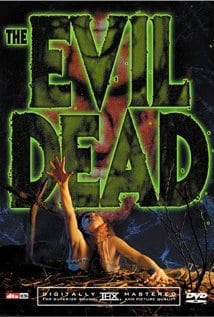


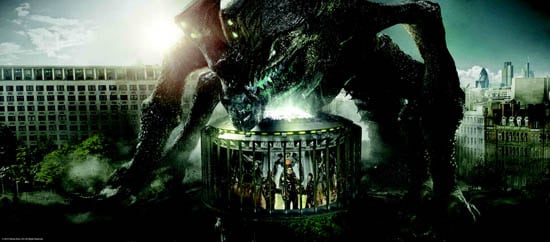
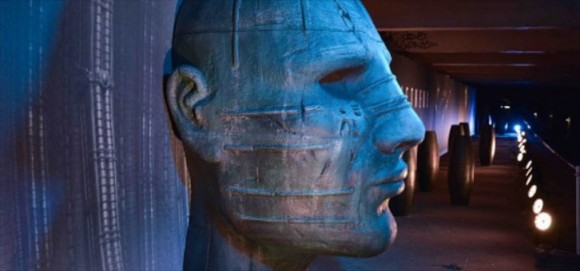
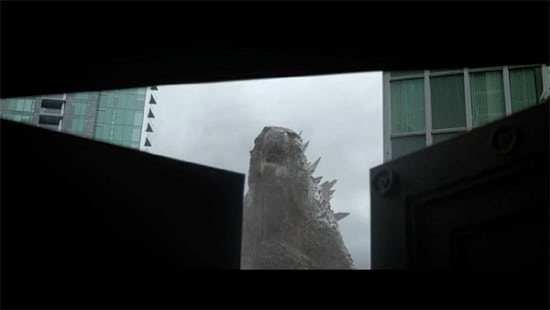
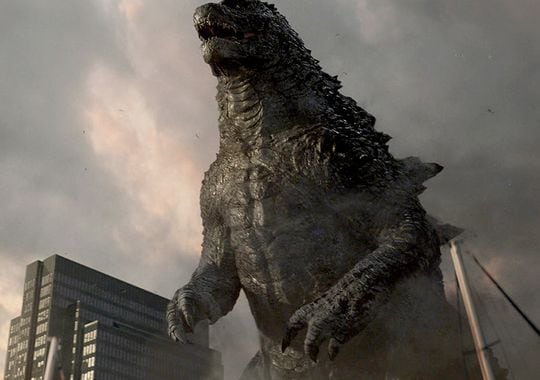


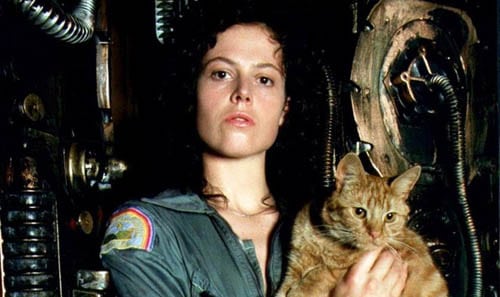

Interesting article, Matt. I agree with you. It was something I actually thought of the other week. Not many films are a mystery anymore and the number of clips, trailers and teasers, not to mention stills and posters, can be overload.
I’d love to go back to the 90s when you just rented on the face of the VHS cover. Good ol’ days!